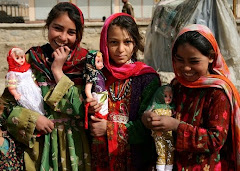Early last year, after six hard months soldiering in Afghanistan, a group of American infantrymen reached a momentous decision: It was finally time to kill a haji. Among the men of Bravo Company, the notion of killing an Afghan civilian had been the subject of countless conversations, during
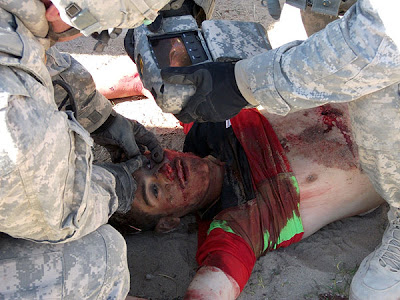
lunchtime chats and late-night bull sessions. For weeks, they had weighed the ethics of bagging "savages" and debated the probability of getting caught. Some of them agonized over the idea; others were gung-ho from the start. But not long after the New Year, as winter descended on the arid plains of Kandahar Province, they agreed to stop talking and actually pull the trigger. Bravo Company had been stationed in the area since summer, struggling, with little success, to root out the Taliban and establish an American presence in one of the most violent and lawless regions of the country. On the morning of January 15th, the company's 3rd Platoon – part of the 5th Stryker Brigade, based out of Tacoma, Washington – left the mini-metropolis of tents and trailers at Forward Operating Base Ramrod in a convoy of armored Stryker troop carriers. The massive, eight-wheeled trucks surged across wide, vacant stretches of desert, until they came to La Mohammad Kalay, an isolated farming village tucked away behind a few poppy fields. to provide perimeter security, the soldiers parked the Strykers at the outskirts of the settlement, which was nothing more than a warren of mud-and-straw compounds. Then they set out on foot. Local villagers were suspected of supporting the Taliban, providing a safe haven for strikes against U.S. troops. But as the soldiers of 3rd Platoon walked through the alleys of La Mohammad Kalay, they saw no armed fighters, no evidence of enemy positions. Instead, they were greeted by a frustratingly familiar sight: destitute Afghan farmers living without electricity or running water; bearded men with poor teeth in tattered traditional clothes; young kid
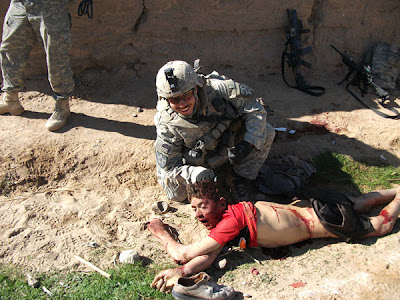
s eager for candy and money. It was impossible to tell which, if any, of the villagers were sympathetic to the Taliban. The insurgents, for their part, preferred to stay hidden from American troops, striking from a distance with IEDs. While the officers of 3rd Platoon peeled off to talk to a village elder inside a compound, two soldiers walked away from the unit until they reached the far edge of the village. There, in a nearby poppy field, they began looking for someone to kill. "The general consensus was, if we are going to do something that fucking crazy, no one wanted anybody around to witness it," one of the men later told Army investigators. The poppy plants were still low to the ground at that time of year. The two soldiers, Cpl. Jeremy Morlock and Pfc. Andrew Holmes, saw a young farmer who was working by himself among the spiky shoots. Off in the distance, a few other soldiers stood sentry. But the farmer was the only Afghan in sight. With no one around to witness, the timing was right. And just like that, they picked him for execution. He was a smooth-faced kid, about 15 years old. Not much younger than they were: Morlock was 21, Holmes was 19. His name, they would later learn, was Gul Mudin, a common name in Afghanistan. He was wearing a little cap and a Western-style green jacket. He held nothing in his hand that could be interpreted as a weapon, not even a shovel. The expression on his face was welcoming. "He was not a threat," Morlock later confessed.
 lunchtime chats and late-night bull sessions. For weeks, they had weighed the ethics of bagging "savages" and debated the probability of getting caught. Some of them agonized over the idea; others were gung-ho from the start. But not long after the New Year, as winter descended on the arid plains of Kandahar Province, they agreed to stop talking and actually pull the trigger. Bravo Company had been stationed in the area since summer, struggling, with little success, to root out the Taliban and establish an American presence in one of the most violent and lawless regions of the country. On the morning of January 15th, the company's 3rd Platoon – part of the 5th Stryker Brigade, based out of Tacoma, Washington – left the mini-metropolis of tents and trailers at Forward Operating Base Ramrod in a convoy of armored Stryker troop carriers. The massive, eight-wheeled trucks surged across wide, vacant stretches of desert, until they came to La Mohammad Kalay, an isolated farming village tucked away behind a few poppy fields. to provide perimeter security, the soldiers parked the Strykers at the outskirts of the settlement, which was nothing more than a warren of mud-and-straw compounds. Then they set out on foot. Local villagers were suspected of supporting the Taliban, providing a safe haven for strikes against U.S. troops. But as the soldiers of 3rd Platoon walked through the alleys of La Mohammad Kalay, they saw no armed fighters, no evidence of enemy positions. Instead, they were greeted by a frustratingly familiar sight: destitute Afghan farmers living without electricity or running water; bearded men with poor teeth in tattered traditional clothes; young kid
lunchtime chats and late-night bull sessions. For weeks, they had weighed the ethics of bagging "savages" and debated the probability of getting caught. Some of them agonized over the idea; others were gung-ho from the start. But not long after the New Year, as winter descended on the arid plains of Kandahar Province, they agreed to stop talking and actually pull the trigger. Bravo Company had been stationed in the area since summer, struggling, with little success, to root out the Taliban and establish an American presence in one of the most violent and lawless regions of the country. On the morning of January 15th, the company's 3rd Platoon – part of the 5th Stryker Brigade, based out of Tacoma, Washington – left the mini-metropolis of tents and trailers at Forward Operating Base Ramrod in a convoy of armored Stryker troop carriers. The massive, eight-wheeled trucks surged across wide, vacant stretches of desert, until they came to La Mohammad Kalay, an isolated farming village tucked away behind a few poppy fields. to provide perimeter security, the soldiers parked the Strykers at the outskirts of the settlement, which was nothing more than a warren of mud-and-straw compounds. Then they set out on foot. Local villagers were suspected of supporting the Taliban, providing a safe haven for strikes against U.S. troops. But as the soldiers of 3rd Platoon walked through the alleys of La Mohammad Kalay, they saw no armed fighters, no evidence of enemy positions. Instead, they were greeted by a frustratingly familiar sight: destitute Afghan farmers living without electricity or running water; bearded men with poor teeth in tattered traditional clothes; young kid s eager for candy and money. It was impossible to tell which, if any, of the villagers were sympathetic to the Taliban. The insurgents, for their part, preferred to stay hidden from American troops, striking from a distance with IEDs. While the officers of 3rd Platoon peeled off to talk to a village elder inside a compound, two soldiers walked away from the unit until they reached the far edge of the village. There, in a nearby poppy field, they began looking for someone to kill. "The general consensus was, if we are going to do something that fucking crazy, no one wanted anybody around to witness it," one of the men later told Army investigators. The poppy plants were still low to the ground at that time of year. The two soldiers, Cpl. Jeremy Morlock and Pfc. Andrew Holmes, saw a young farmer who was working by himself among the spiky shoots. Off in the distance, a few other soldiers stood sentry. But the farmer was the only Afghan in sight. With no one around to witness, the timing was right. And just like that, they picked him for execution. He was a smooth-faced kid, about 15 years old. Not much younger than they were: Morlock was 21, Holmes was 19. His name, they would later learn, was Gul Mudin, a common name in Afghanistan. He was wearing a little cap and a Western-style green jacket. He held nothing in his hand that could be interpreted as a weapon, not even a shovel. The expression on his face was welcoming. "He was not a threat," Morlock later confessed.
s eager for candy and money. It was impossible to tell which, if any, of the villagers were sympathetic to the Taliban. The insurgents, for their part, preferred to stay hidden from American troops, striking from a distance with IEDs. While the officers of 3rd Platoon peeled off to talk to a village elder inside a compound, two soldiers walked away from the unit until they reached the far edge of the village. There, in a nearby poppy field, they began looking for someone to kill. "The general consensus was, if we are going to do something that fucking crazy, no one wanted anybody around to witness it," one of the men later told Army investigators. The poppy plants were still low to the ground at that time of year. The two soldiers, Cpl. Jeremy Morlock and Pfc. Andrew Holmes, saw a young farmer who was working by himself among the spiky shoots. Off in the distance, a few other soldiers stood sentry. But the farmer was the only Afghan in sight. With no one around to witness, the timing was right. And just like that, they picked him for execution. He was a smooth-faced kid, about 15 years old. Not much younger than they were: Morlock was 21, Holmes was 19. His name, they would later learn, was Gul Mudin, a common name in Afghanistan. He was wearing a little cap and a Western-style green jacket. He held nothing in his hand that could be interpreted as a weapon, not even a shovel. The expression on his face was welcoming. "He was not a threat," Morlock later confessed.

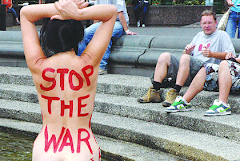
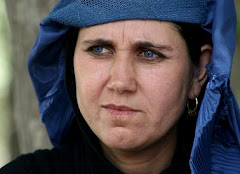.jpg)


